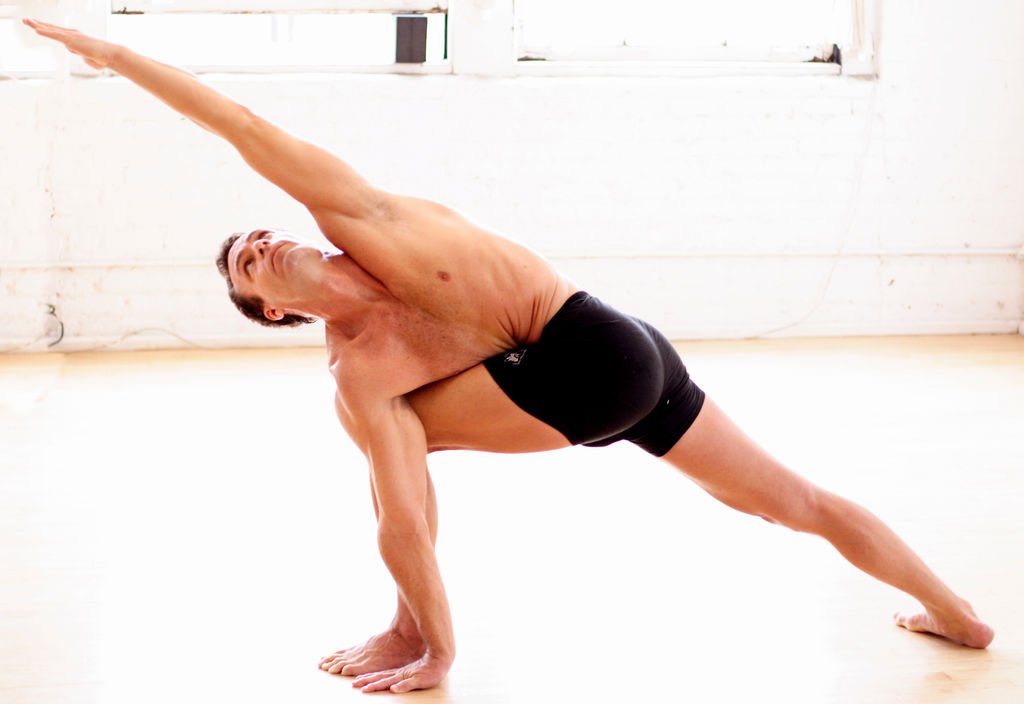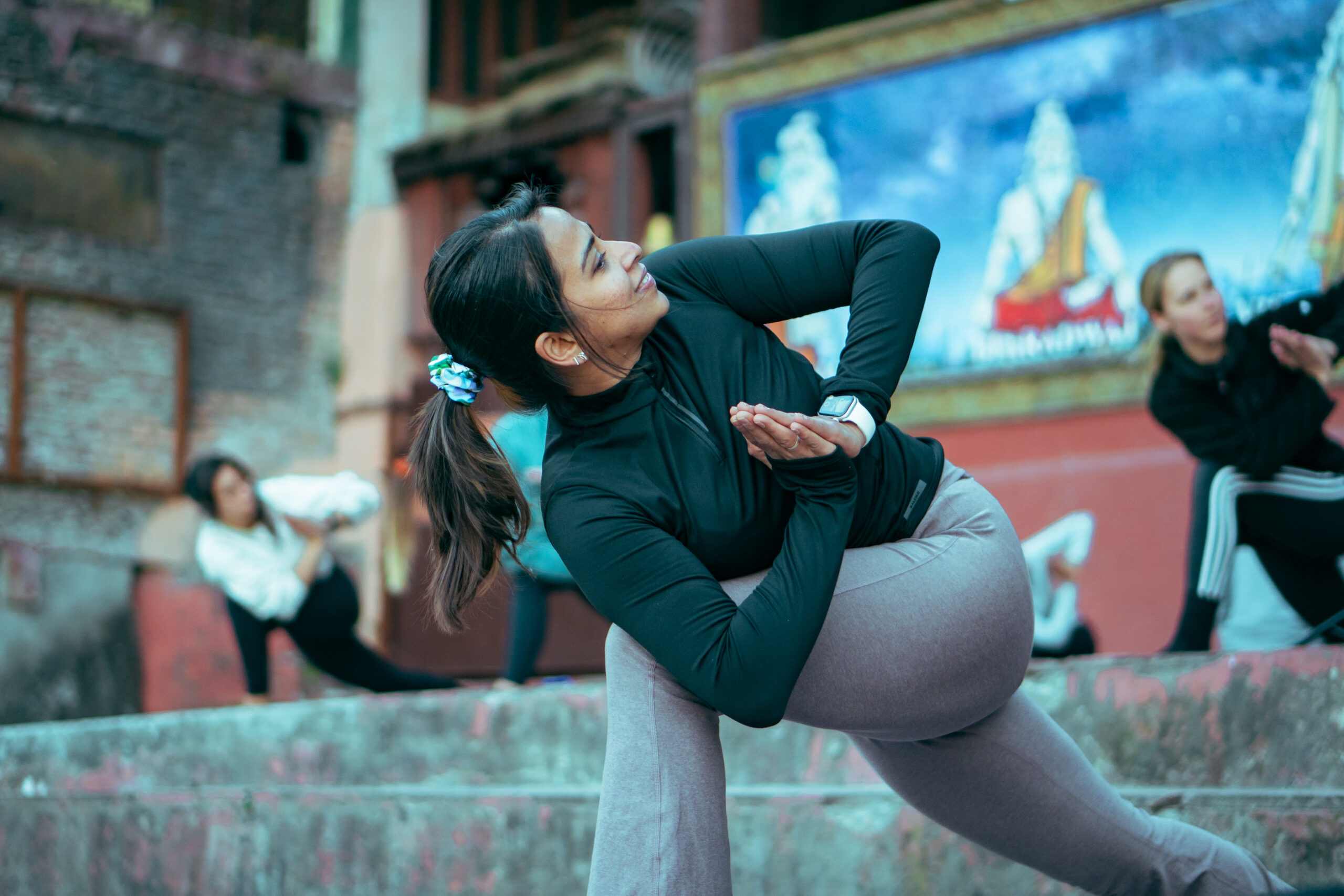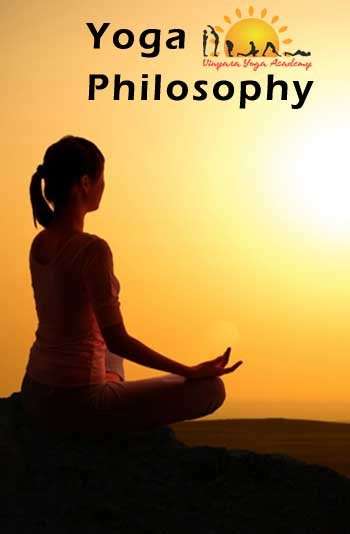
Revolved Side Angle Pose is a deep, standing twist that challenges your balance and strengthens your legs and core. It’s a powerful variation on Extended Side Angle Pose (Utthita Parsvakonasana). It also combines the benefits ofWarrior I (Virabhadrasana I) and Crescent Lunge Twist (Parivrtta Anjaneyasana).
The Sanskrit name for this pose, “Parivrtta Parsvakonasana” (PAHR-ee-VREE-tah PARZH-vuh-ko-NAHS-uh-nuh), comes from four words:
- “Parivrtta” — meaning “revolved”
- “Parsva” — meaning “side” or “flank”
- “Kona” — meaning “angle”
- “Asana” — meaning “pose”
It also goes by various English names, including “Twisting Side Angle,” “Rotated Side Angle,” “Side Angle Twist,” and others. But no matter what your yoga teacher calls it, you’ll still gain all of the benefits from practicing this challenging, standing twist!
Benefits of Revolved Side Angle Pose
Revolved Side Angle stretches, tones, and strengthens the entire body, inside and out. It stretches the thighs, knees, ankles, calves, groins, chest, and shoulders. This pose builds strength in the legs, as well, particularly in the quadriceps and ankles. It also stimulates and tones the abdominal organs and lungs, which improves digestion, elimination, metabolism, and breathing capacity.
- Strengthens and stretches the legs, knees, and ankles.
- Stretches the groins, spine, chest and lungs, and shoulders.
- Stimulates abdominal organs.
- Increases stamina.
- Improves digestion and aids elimination.
- Improves balance.
 +91-8755744872
+91-8755744872
 contact@vinyasayogaacademy.com
contact@vinyasayogaacademy.com





